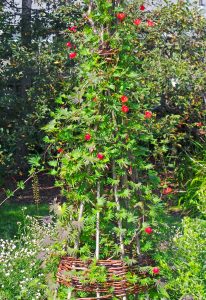
Cardinal climber is a hybrid plant, an allotetraploid created by Logan Sloter of Columbus, Ohio who crossed (by hand pollination) red morning glory (Ipomoea coccinea) and cypress vine (I. quamoclit, as the pollen parent), both native to Central and South America. He made this cross every season starting in 1897 but all of the few specimens produced were absolutely seedless. It took eleven years before one of the hybrid plants produced a single seed in 1908. When planted the following year, that single seed grew into a plant that produced about 500 seeds, but the progeny could not be crossed with either of the parents or any other Ipomoeas. This hybrid, descended from this single plant, reproduces true from seed, with very few deviations from the parent. Initially called I. x multifida (and still often offered under that name), it is now correctly called I. sloteri.
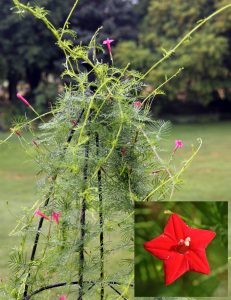
Confusingly, in some areas it goes by the common name of cypress vine (also the common name of one parent plant) or other monikers including morning glory or hearts and honey vine. This frost tender annual heirloom vine in the morning glory family (Convolvulaceae) has been grown as an ornamental for over 100 years both for its attractive foliage and prolific flowers.
The alternate leaves of cardinal climber are halfway between the finely divided, feathery leaves of cypress vine and the entire, heart-shaped leaves of red morning glory. The triangular, medium green leaves are multiply divided into numerous deep, narrow lobes of varying numbers (usually 3-7 pairs plus one wider terminal lobe), almost resembling little palm leaves and giving a lacy appearance to the foliage. This vigorous, twining tropical plant grows up to 10 feet long, growing slowly under cool conditions, then rapidly growing and blooming in hot, humid weather. The slender, flattened stems intertwine and tangle amongst themselves or whatever they are rambling up or over.
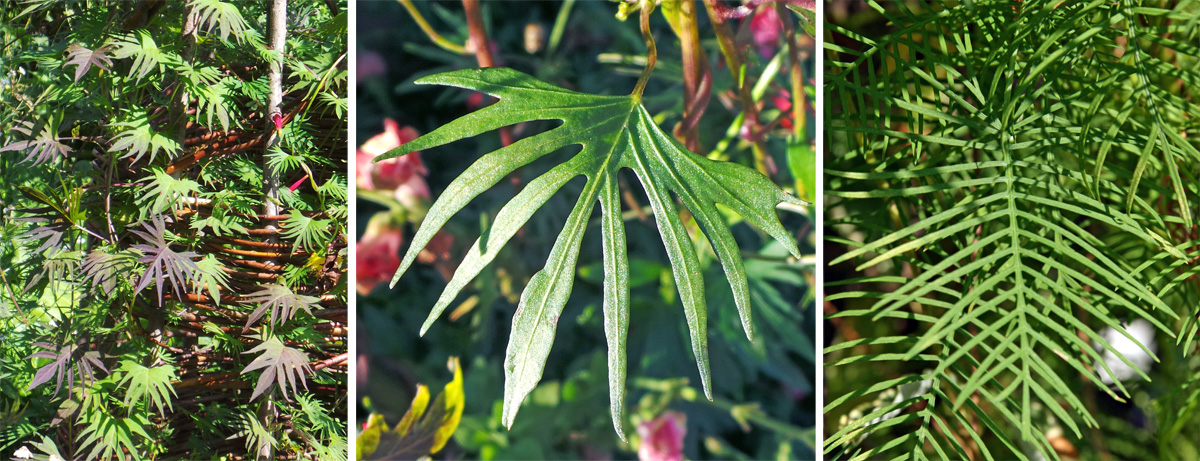

Cardinal vine begins blooming in mid-summer and continues until the plant is killed by frost. Like both parent species, cardinal climber produces vivid, bright red, trumpet-shaped flowers with yellow or white throats (although cypress vine may also have pink or white flowers). The five overlapping petals of the inch long flowers are flared at end (a salverform corolla), forming a pentagon shape (cypress vine flowers are more star-shaped) from which the five white to yellow stamens and a single 1 to 2-lobed style with globular stigma protrude. The nectar-producing flowers are attractive to ruby throated hummingbirds, as well as bees and some butterflies, and close up at night.

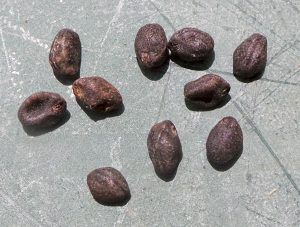
Flowers are followed by fruits which are ovoid capsules. Each rounded green capsule eventually dries to a papery brown cover over 2-4 hard seeds. The irregularly-shaped mature dark brown to black seeds resemble a typical morning glory seed. To save seeds to plant the following year, allow the seed pods to dry on the plants and collect the brown pods before they split open and release the seeds. It will not reseed in cold climates (but will readily in warmer areas). Seeds are highly toxic if ingested.
Place cardinal climber near a trellis, arbor or other structure it can climb. Or use it as a dense groundcover or plant it near plants that will decline by mid-summer (such as breadseed poppy) so it will scramble over and cover the other plants. Cardinal climber can even be grown in a container (but may overwhelm any other plants in the container even if given a support to climb) or a hanging basket where the vines will eventually cascade back down after climbing upwards.
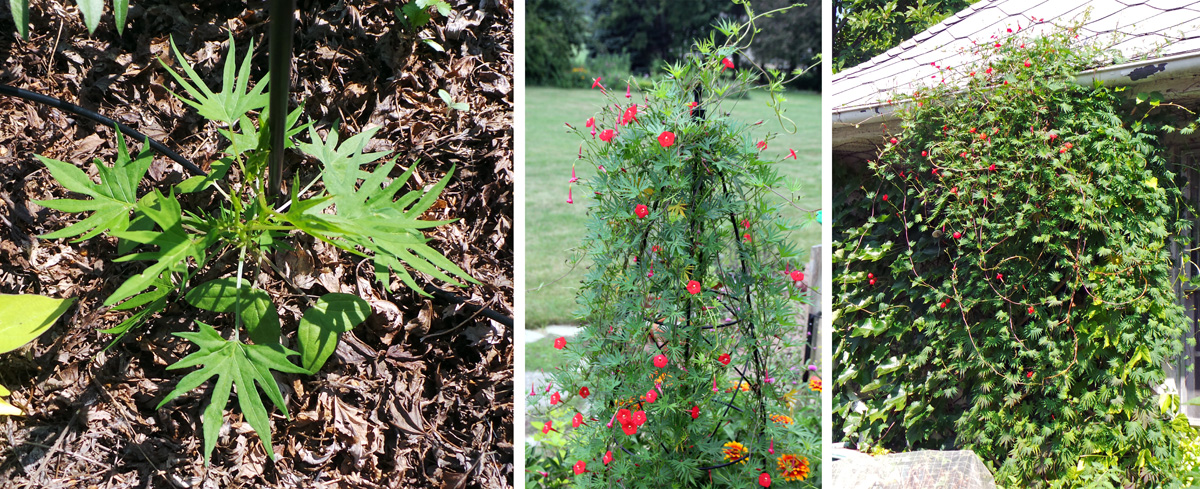
Grow cardinal climber in full sun in any well-drained soil. Although it will tolerate dry soil, provide regular water for the best growth, and fertilize only if the soil is very poor. The vines can be trimmed but do not need regular pruning and the flowers do not need deadheading. This plant has no significant diseases or insect pests, but rabbits and deer may feed on them.
Cardinal climber is an annual propagated from seed. To enhance germination, scarify (nick with a knife or use sandpaper to abrade the hard exterior) the large seeds and/or soak them in warm water overnight before sowing. Seeds treated this way should germination in a week or two. This vine can be started indoors 4-6 weeks before the last frost, but like most plants in the morning glory family it doesn’t like to have its roots disturbed, so it is often sown directly in the ground after all danger of frost is past and the soil is warm. Place the seeds about a quarter inch deep in the soil and space 6-12” apart.
– Susan Mahr, University of Wisconsin – Madison
Ask Your Gardening Question
If you’re unable to find the information you need, please submit your gardening question here:





 Marigolds
Marigolds Create a Butterfly Garden
Create a Butterfly Garden Plant Flowers to Encourage Beneficial Insects
Plant Flowers to Encourage Beneficial Insects Forcing Bulbs
Forcing Bulbs


